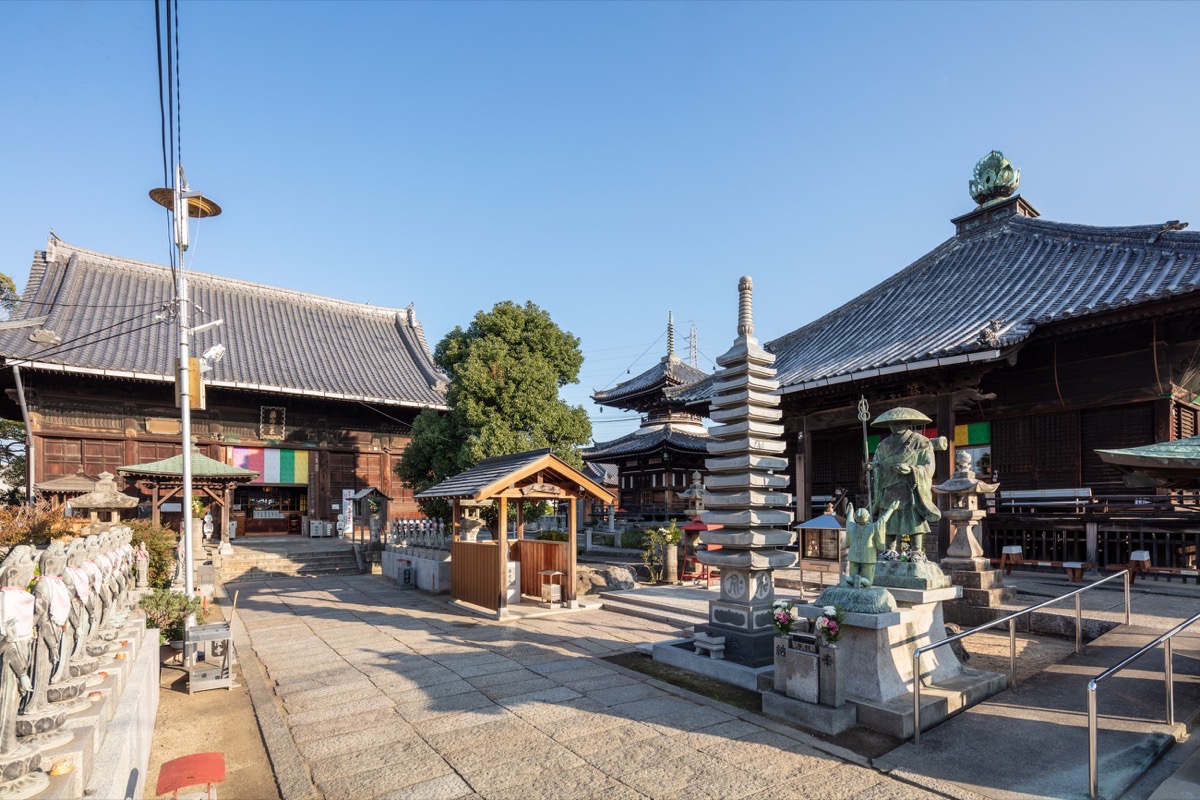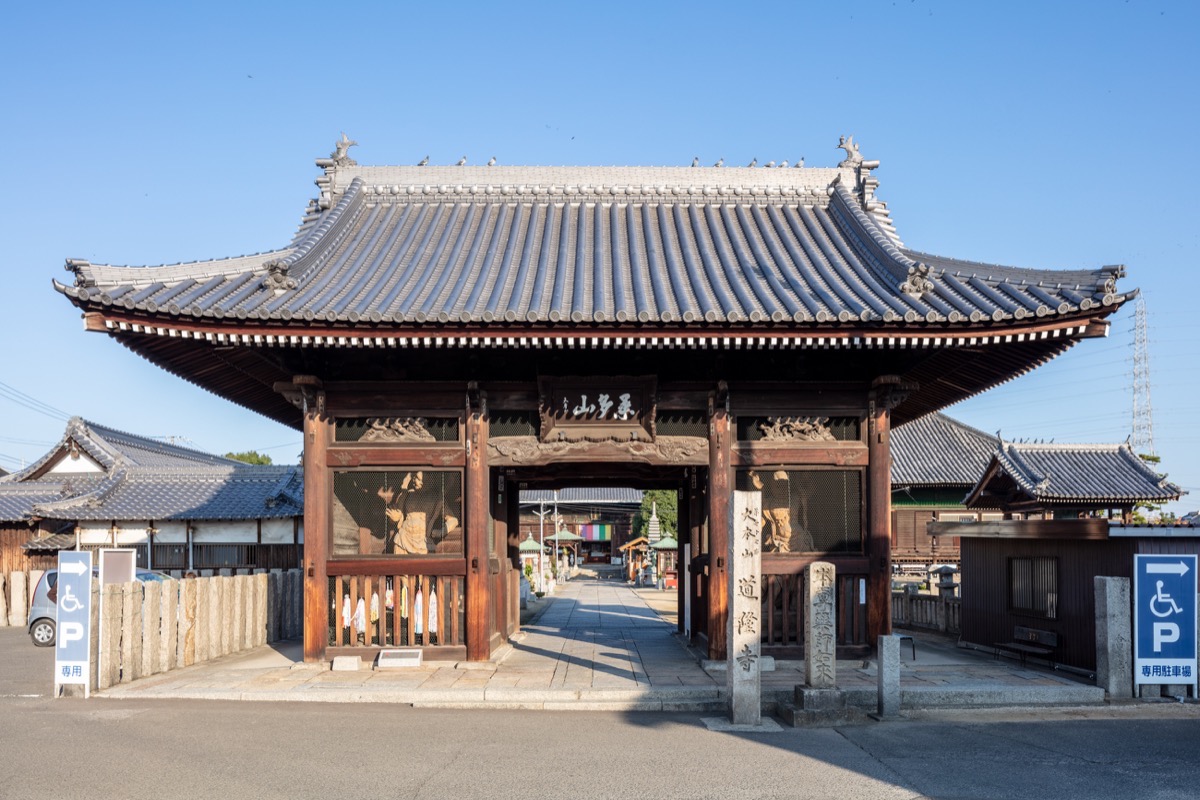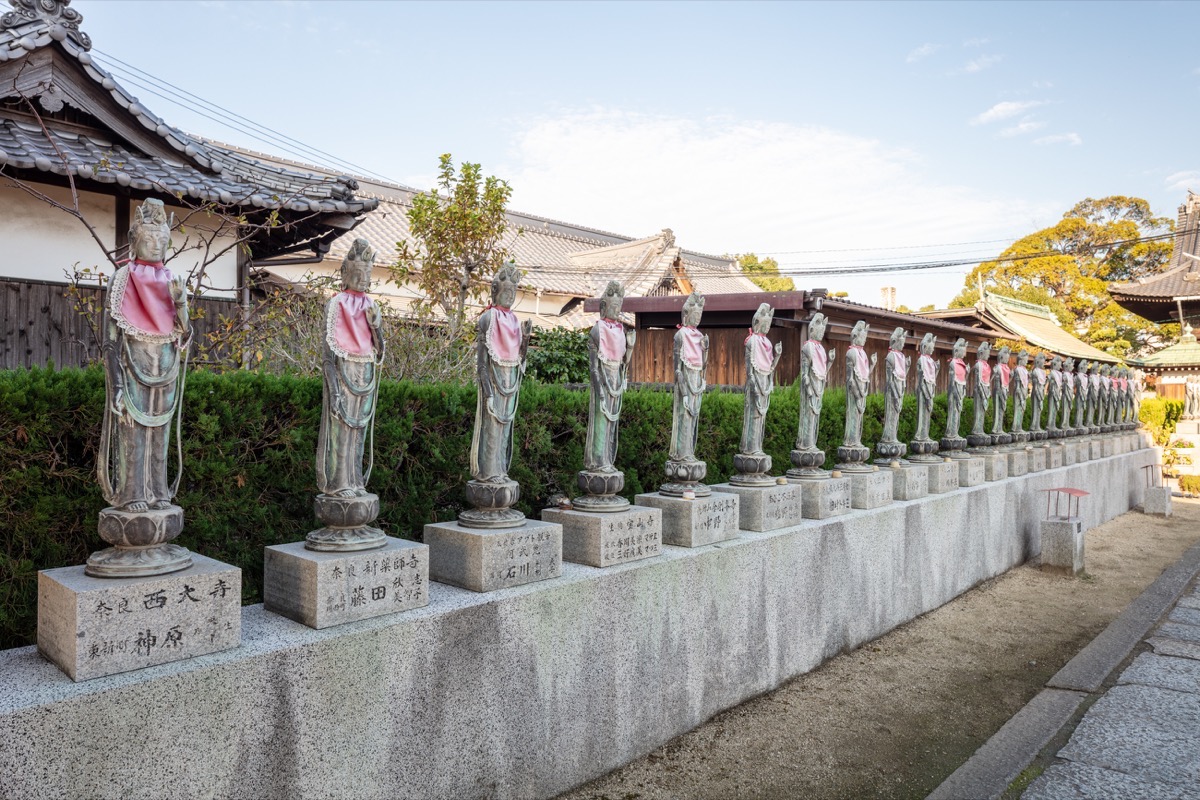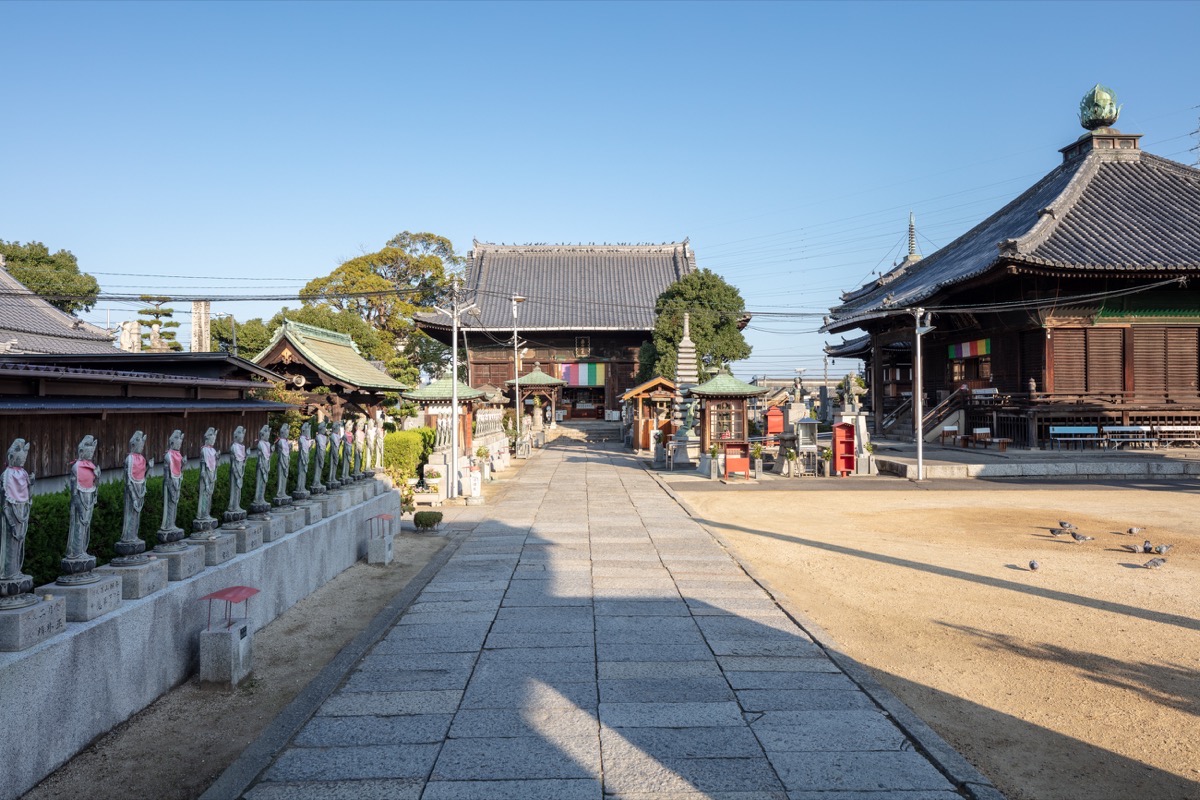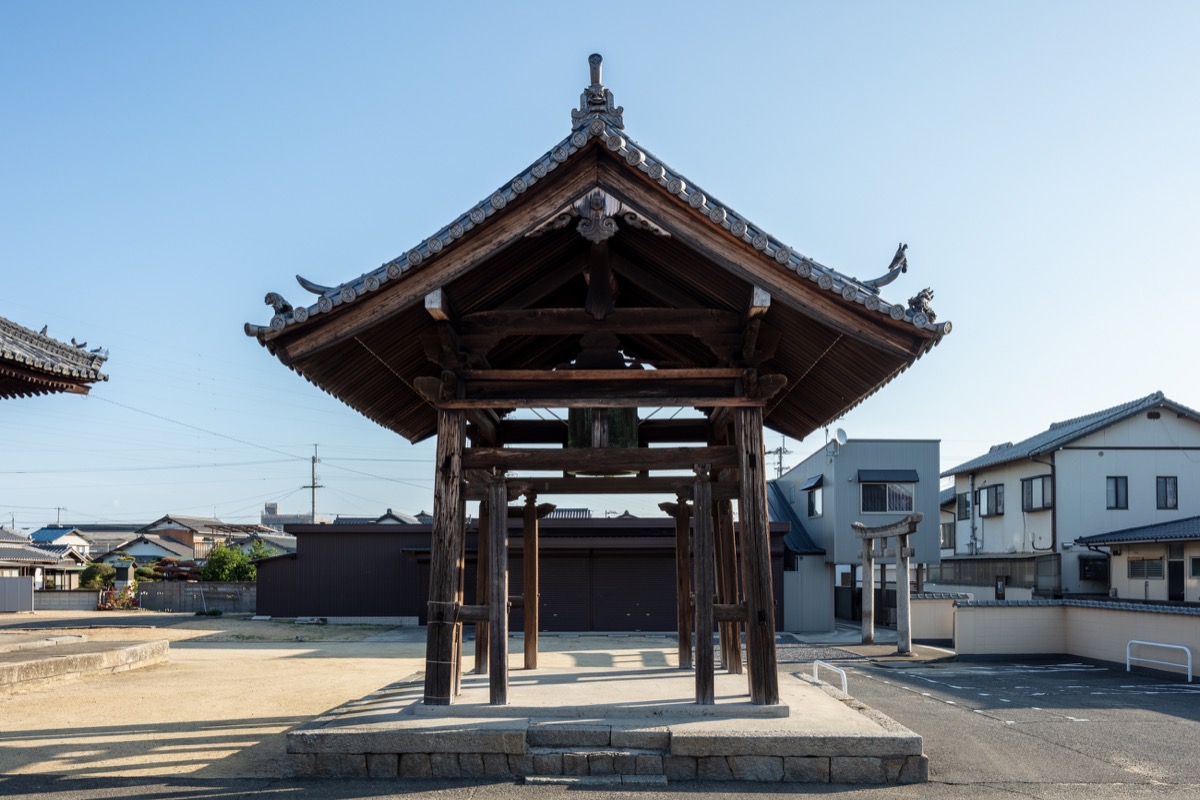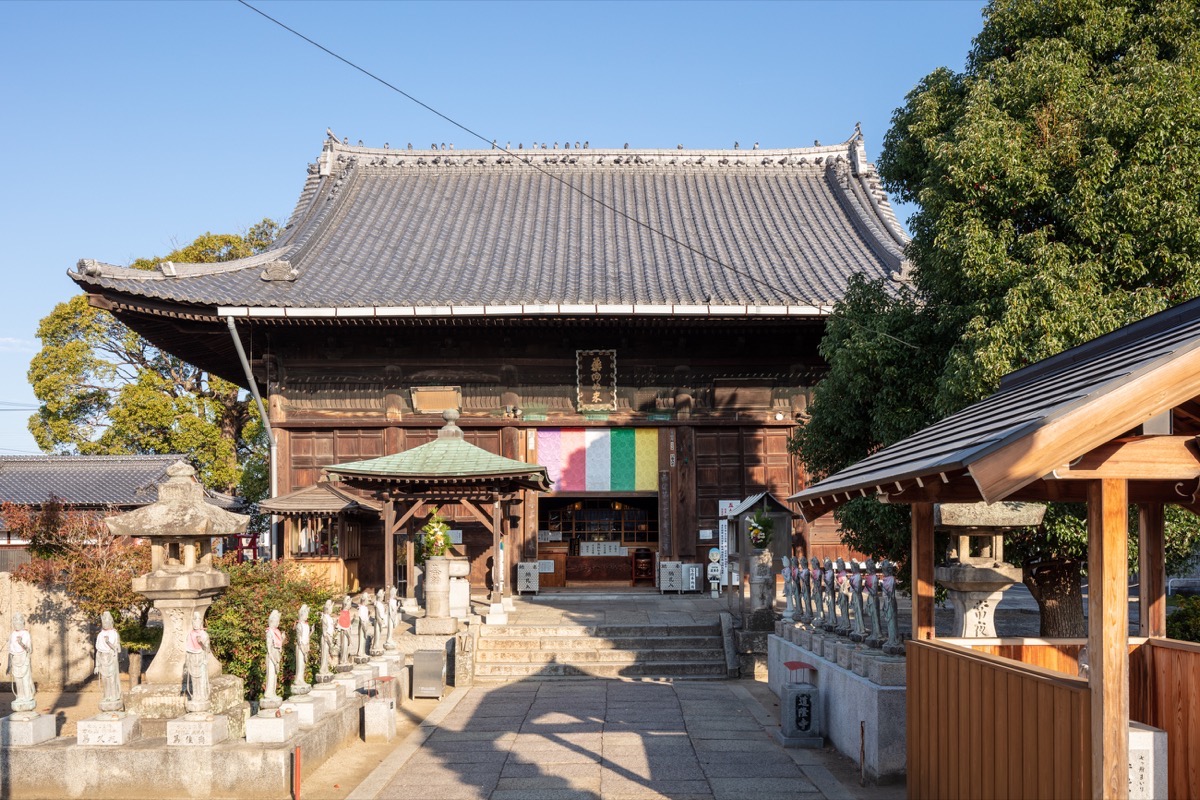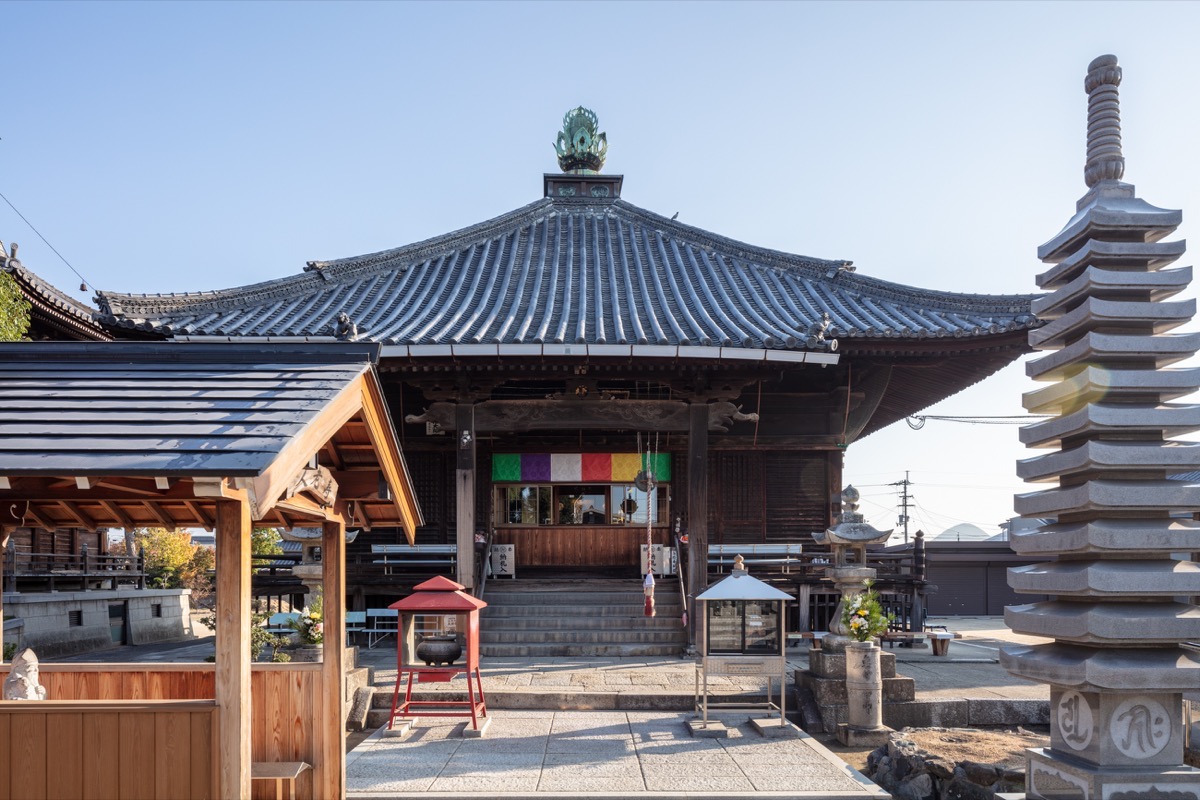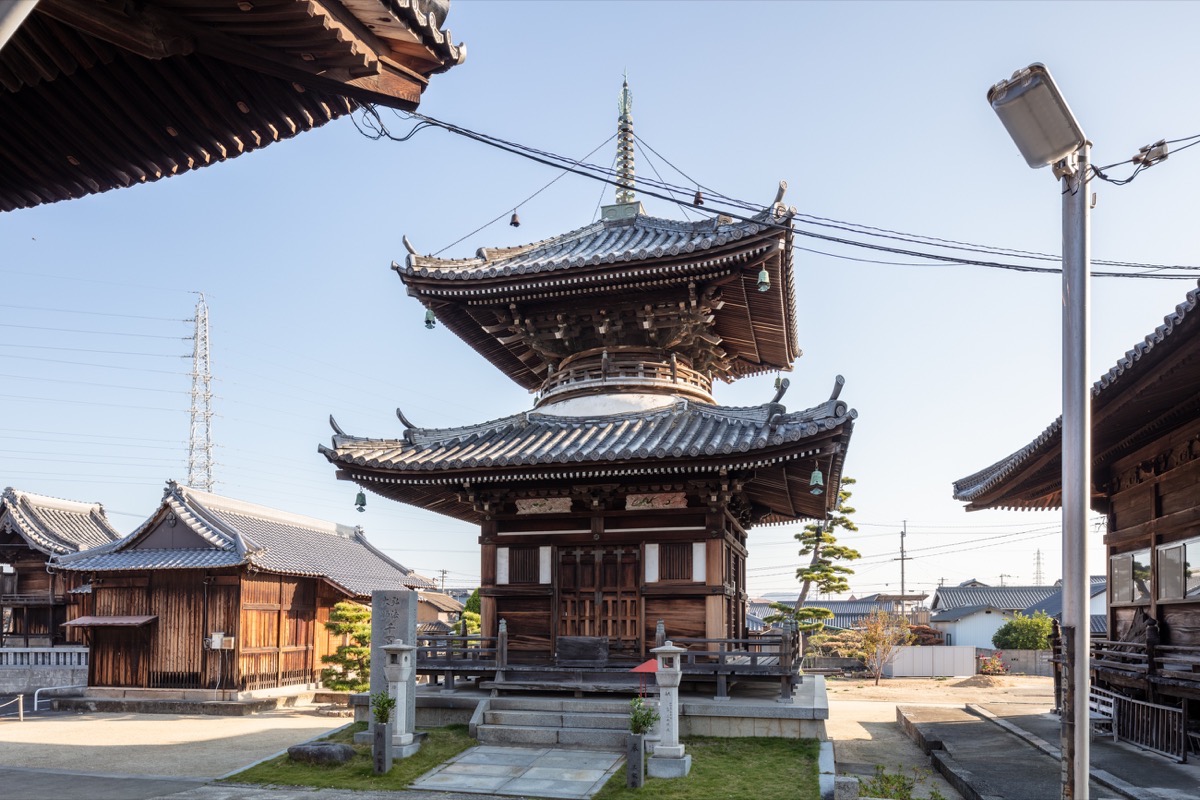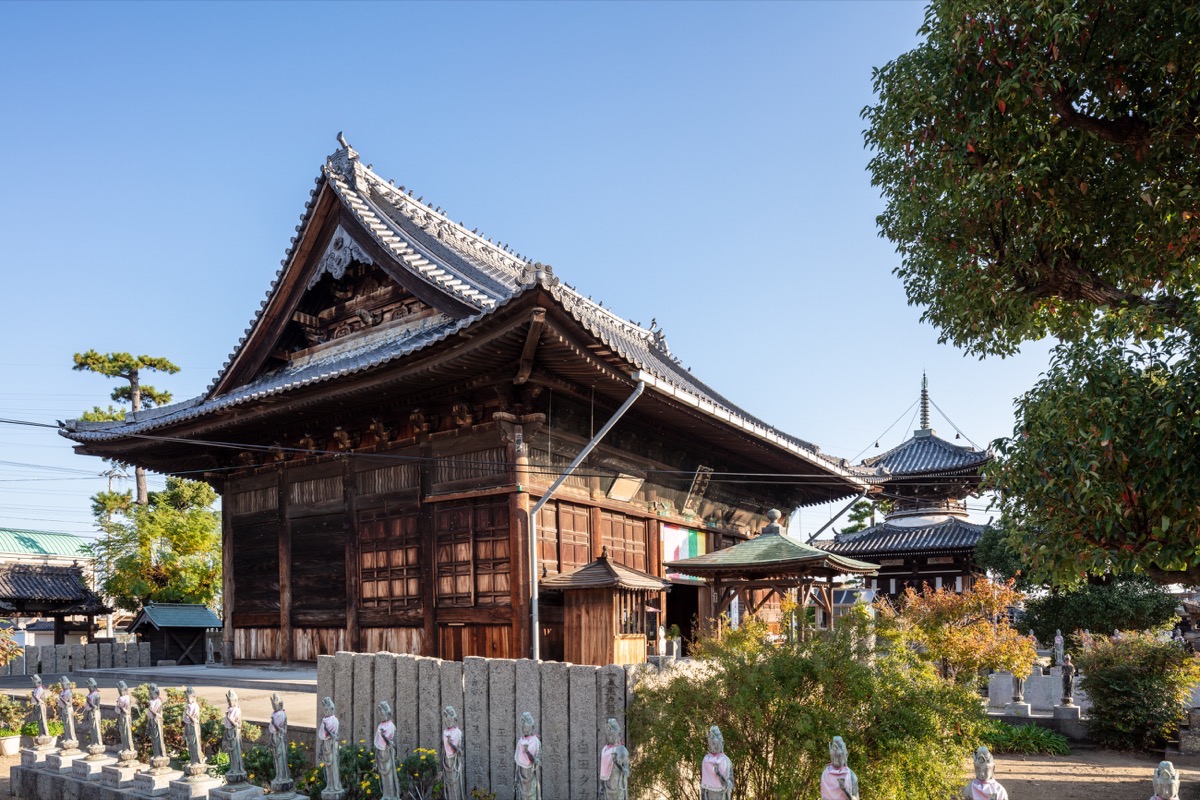Doryuji TempleThe 77th Temple Doryuji Temple
| District | Shikoku Henro pilgrimage | Period | ー |
|---|---|---|---|
| Set Content/Set Date | |||
| Owner | Doryuji Temple | Location | 1-3-30 Kitagamo, Nakatadogun, Tadotsucho, Kagawa |
On the north side of the Marugame Plains is Doryuji Temple, the 77th sacred spot along the Shikoku Henro pilgrimage.
According to writings documenting the temple’s origins and history, Doryuji Temple was built in 712, when the ruler of this area, Wake no Michitaka, made a small statue of Healing Buddha from an enormous mulberry tree and built a small hall. At that time, there were mulberry orchards throughout the area, and silk was also produced.
As visitors pass through the Nio Gate, they are greeted by a line of over 250 bronze statues of the bodhisattva Kannon (Avalokiteshvara).
It is said that Wake no Michitaka’s son, Tomosuke, became a disciple of Kobo Daishi (Kukai) in 807, built the main hall and other buildings, and named the temple after his father.
In front of the Daishido Hall there is a statue of Emon Saburo, kneeling before Kobo Daishi and repenting for his sins. Behind the main hall is the tomb of Kyogoku Samazo, a doctor from the late Edo period (1603-1868), which is said to be beneficial to those with eye diseases.
Also, there are stone objects built within the temple grounds by people entertaining from Bizen, Bicchu and Bingo (Okayama Prefecture) during the Edo period, indicating that spirit of hospitality flourished at that time.

